20 Houseplants Safe for Dogs and Cats (The Ultimate Guide)
 Fact-checked
Fact-checked
Last Updated: February 2, 2023
Sometimes it can be hard to choose the right plants that won’t pose a threat to your pets. Some common plants can be toxic to pets and keeping your dog or cat away from them can be next to impossible. Luckily, there is a way around it.
Here are 25 non-toxic indoor houseplants safe for dogs and cats that will be a great addition to almost any room.
20 Houseplants Safe for Dogs and Cats
Let’s see what types of houseplants are safe for your pet:
Tall Indoor Trees
Our choices are:
1. Parlor Palm
Botanical Name: Chamaedorea Elegans
Stem Height: from 40 to 90 inches
Color: shiny, healthy green leaves
About the Plant
The parlor palm is an elegant indoor air purifier that cleanses your home’s air from toxins. It enjoys lower light levels and dry air.
These pet-friendly plants will not affect your pet even if it eats one of the palm’s leaves.
Care
Parlor palms are easy to maintain and grow:
- Light: thrives in medium to bright indirect light
- Water: needs watering once a week or once every other week; increase watering during the warmer season
- Sun: tolerates shadier spots, but shouldn’t be exposed to direct sunlight
- Temperature: standard home temperatures between 65 to 75 °F
| DID YOU KNOW: Members of the higher circles of Victorian society often kept the parlor palm as an ornament in their sitting rooms. |
2. Ponytail Palm
Botanical Name: Beaucarnea recurvata
Stem Height: up to 70 inches
Color: green leaves and creamy white flowers
About the Plant
Ponytail palms are very slow-growing plants. They have long, sharp leathery leaves that twist over time and give this plant a peculiar fountain look.
These cheerful palms are non-toxic and are safe plants for cats with nibbling habits.
Care
As with all indoor plants, it is best to mimic this palm’s natural conditions:
- Light: Does best in bright light
- Water: Keep the soil moist and allow it to dry out between watering
- Sun: needs exposure to full sun
- Temperature: normal room temperature, around 70 °F
| DID YOU KNOW: Ponytail palms can bloom up to three times a year. Their blooms last several weeks. |
Tiny Indoor Plants
Let’s continue:
3. Polka Dot Plant
Botanical Name: Hypoestes phyllostachya
Stem Height: around 2 inches
Color: green leaves with pink overlay
About the Plant
According to the ASPCA, polka dot plants are not toxic to pets. But if your pet eats a part of the plant, it might experience mild digestive discomforts and diarrhea.
Polka dot plants are indoor plants safe for pets to be around. They feature flat green leaves that can be overlaid with purple, pink, or red spots.
Care
Caring for these impressive plants is fairly easy:
- Light: indirect light is ideal
- Water: use enough water to moisten the soil evenly
- Sun: prefers shadier spots
- Temperature: around 70°F; humidity around 50%
| DID YOU KNOW: Polka dot plants thrive in a humid environment which is why they make great terrarium houseplants. |
4. African Violet
Botanical Name: Saintpaulia
Stem Height: maximum 6 inches
Color: green leaves; purple flowers
About the Plant
African violets are houseplants safe for cats. They do not contain any elements that could be potentially harmful to your cat or dog.
African violets are an immensely popular houseplant choice. There are thousands of varieties that come with different colors of flowers and leaf shapes.
Care
Striking a balance in their care is very important:
- Light: can be grown under both natural and fluorescent lights
- Water: need high humidity and moist soil; use warm water
- Sun: enjoy bright indirect sunlight
- Temperature: cannot withstand temperatures below 60 °F
| DID YOU KNOW: When properly cared for, these lovely pet–safe plants can bloom all year round. |
5. Baby’s Tears
Botanical Name: Soleirolia soleirolii
Stem Height: 1 to 5 inches
Color: green
About the Plant
Baby’s tears plants are easy to grow and make great cat-safe plants.
Their bean-like leaves give this plant a mossy look which makes it the perfect hanging plant.
Care
Baby’s tears are not the easiest plants to take care of as they like to have their needs met:
- Light: bright indirect light
- Water: during the warmer season keep the soil lightly moist; reduce watering during winter
- Sun: place it near an east or west-facing window
- Temperature: tolerates temperatures between 50 and 60 °F
| DID YOU KNOW: Baby’s tears plants can be grown as terrarium plants, but have a tendency to overtake the whole terrarium. |
Hanging Plants
Our best choices are:
6. Swedish Ivy
Botanical Name: Plectranthus verticillatus
Stem Height: up to 10 inches
Color: green leaves
About the Plant
Swedish ivy is well known for its distinctive foliage of scalloped glossy green leaves and delicate purple or white flowers.
They are non-toxic and safe plants for dogs and cats. You have to be careful when purchasing Swedish ivy, however, as the Pet Poison Helpline advises that it can be mixed up with the Devil’s ivy plant which is a toxic species.
Care
- Light: needs moderate light
- Water: no more than once a week; allow the soil to dry between watering
- Sun: similarly to other low-light indoor plants it should be kept in partial shade
- Temperature: maintain a room temperature between 60 and 70 °F
| DID YOU KNOW: Despite its name, this plant is neither native to Sweden nor a real ivy plant. |
7. Boston Fern
Botanical Name: Nephrolepis exaltata
Stem Height: up to 30 inches
Color: green
About the Plant
Feel safe to make this fern a part of your home. The Boston Fern plants are a good choice for dogs as they will not cause any problems unless, of course, your dog ingests a massive amount.
The Boston Fern has high demands in terms of humidity. When there is not enough humidity, its leaves start turning yellow. It is a relatively cheap indoor plant compared to other ferns.
Care
Though its leaves seem delicate and fragile, this fern is incredibly hardy.
- Light: a brightly lit bathroom is the perfect place for it
- Water: check the soil daily; water it if the soil seems even a little dry
- Sun: indirect light
- Temperature: need a temperature over 55°F
| DID YOU KNOW: Not only are Boston ferns entirely pet–safe houseplants, but they are also amazing air purifiers. |
8. Peperomia Green
Botanical Name: Peperomia spp.
Stem Height: 6 to 12 inches
Color: purple, red, or gray leaves
About the Plant
Peperomia can have thick textured or smooth leaves in purple, red, or gray.
All peperomia varieties are non-toxic. The ASPCA claims these houseplants are safe for cats and dogs, but it warns owners that digesting some plants can cause stomach irritations.
Care
Peperomia plants need little attention and are easy to take care of:
- Light: can live both under natural and artificial lights
Water: This plant has succulent leaves that store water so it is better to keep its soil dry rather than moist
- Sun: when peperomias don’t receive enough light they become leggy
- Temperature: between 65 to 80°F
| DID YOU KNOW: Many peperomia varieties have succulent characteristics. Among those are Ruby Glow peperomia and Trailing Jade. |
9. Lipstick Plant
Botanical Name: Aeschynanthus humilis
Stem Height: max. 12 inches
Color: light or dark green, mottled green or maroon leaves; bright red or orange flowers
About the Plant
The lipstick plant blossoms in spring or summer and produces pink, red, yellow, or orange flowers. Lipstick plants do not contain toxic elements and are plants that are safe for cats and dogs alike.
Care
Lipstick plants are low-light plants that thrive in high humidity:
- Light: bright, indirect light
- Water: if its leaves appear soft, give it more water; water frequently
- Sun: the plant will not bloom unless it gets enough sunlight
- Temperature: between 75 and 85 °F
| DID YOU KNOW: Many lipstick plant varieties such as the Mona Lisa lipstick plant bloom all year round. |
Flowering Plants
Amazing flowering plants that are pet-safe:
10. Jasmine Plant
Botanical Name: Jasminum
Stem Height: vines up to 70 inches/container plants no more than 12 inches
Color: white, yellow, or pink flowers
About the Plant
Jasmine plants come in different varieties and can be found in the form of bushes and vines; some are even evergreen. The Animal Poison Control website reassures pet owners that all Jasminum types are houseplants safe for cats and dogs.
Care
What matters most for jasmine plants is to protect them from cold temperatures:
- Light: expose the jasmine plant to as much light as possible
- Water: Keep the soil moist during summer; during winter and spring reduce the watering and maintain the soil semi-dry
- Sun: should be kept in partial sun, ideally close to a south window
- Temperature: from 60 to 70 °F
| DID YOU KNOW: The scent of jasmine plants has a calming and relaxing effect. |
11. Orchid
Botanical Name: Orchidaceae
Stem Height: around 12 inches
Color: green foliage; blue, pink, white, and purple flowers
About the Plant
The ASPCA claims all orchid species are non-toxic safe houseplants for cats and dogs. In the worst case scenario, if your cat eats too much of this plant, it will experience mild vomiting and diarrhea.
Moth orchids and cane orchids are the most common indoor plants.
Care
It’s important for your indoor environment to resemble the orchids’ natural habitat:
- Light: orchids enjoy strong, bright indirect light
- Water: they need to be watered sparingly because their roots soak up water very quickly and they do not need too much of it
- Sun: bright but indirect sun
- Temperature: between 50 and 80 °F
| DID YOU KNOW: Orchids are surprisingly symmetrical, resembling a butterfly’s wings or even a face. Each flower can be divided into two perfectly identical halves. |
12. Sunflower
Botanical Name: Helianthus annuus
Stem Height: 18 to 24 inches
Color: green foliage; yellow flowers with a darker center
About the Plant
Sunflowers are dog-safe plants that you can keep in your indoor garden without worrying about your canine’s safety.
They need a lot of light and if you think they are not getting enough daylight consider introducing grow lights.
Care
Create the appropriate setting for these large flowers in your home:
- Light: need great amounts of indirect light
- Water: Water them only once a week
- Sun: 6 to 8 hours of sunlight
- Temperature: around 70 °F
| DID YOU KNOW: The tallest sunflower measured 301 inches. It was grown in Germany and documented in the Guinness Book of World Records in 2014. |
13. Gloxinia
Botanical Name: Sinningia speciosa
Stem Height: 6 to 10 inches
Color: soft, dark green leaves
About the Plant
Gloxinia’s flowers come in a vast array of colors such as red, blue, purple, and pink and provide a gorgeous two-month flower display. Gloxinias are non-toxic dog-safe plants, and according to the ASPCA, they are safe for cats and horses as well. You can make them part of your indoor garden without worrying about your pooch’s safety.
Care
Gloxinias are not very demanding houseplants:
- Light: place it close to a sunny window so it can get enough indirect light
- Water: introduce water directly to the soil, keeping its leaves dry
- Sun: should be kept in partial shade
- Temperature: This plant likes normal room temperatures not lower than 60 °F
| DID YOU KNOW: The majority of gloxinias sold today are hybrids cultivated for bigger and more durable blossoms. |
14. Cape Marigold
Botanical Name: Dimorphotheca
Stem Height: 4 to 12 inches
Color: green with rose-pink, orange, yellow, and white flowers
About the Plant
The ASPCA includes the cape marigold on their non-toxic plant list. Though most marigold flowers are a safe choice, be careful as there are some varieties such as Tagetes that are not cat-safe plants. The Cat Fanciers’ Association even puts this marigold variety’s flowers on their Plants Poisonous to Cats list.
Care
- Light: around 6 hours of direct light
- Water: need regular watering to keep the soil moist
- Sun: marigolds need plenty of sunlight; place them near a south-facing window to support their abundant bloom
- Temperature: below 80 °F
| DID YOU KNOW: The outdoor variety of this plant is considered a highly invasive plant that spreads very easily. |
Plants With Green Foliage
Let’s check them:
15. Cast Iron Plant
Botanical Name: Aspidistra elatior
Stem Height: max. 36 inches
Color: green leaves; white/purple flowers
About the Plant:
This plant is native to China, and it hides tiny, exotic-looking purple flowers under its beautiful green foliage. Although these plants are members of the lily family they are totally pet-safe indoor plants.
Care
This plant can withstand some extreme environmental conditions, but here’s what it needs to thrive:
- Light: Does best in low light; ideal for placing on a north-facing window
- Water: needs moderate watering; make sure that its soil stays properly moist and occasionally use a good quality fertilizer
- Sun: prefers semi-shaded areas
- Temperature: cannot withstand cooler temperatures below 50 °F
| DID YOU KNOW: These pet–safe plants can potentially live up to 50 years. |
16. Zebra Plant
Botanical Name: Aphelandra squarrosa
Stem Height: 6 to 8 inches
Color: dark green leaves; yellow flowers
About the Plant
Zebra plants are known for their waxy deep green leaves that are covered with white zebra-like stripes. You can safely decorate your home with it, as Zebra plants are perfectly pet-friendly indoor plants. These plants are non-toxic but non-edible as well so your pet might experience some stomach irritation if it eats too much of them.
Care
These plants need high humidity and lots of moisture:
- Light: place them where they can get the brightest light
- Water: during the growing season water them when the soil is dry to the touch; reduce watering during the winter season
- Sun: can tolerate a few hours of direct sunlight, but should be exposed to indirect light mostly
- Temperature: maintain a room temperature between 65 to 80 °F
| DID YOU KNOW: Calathea zebrina is another plant that goes by the name zebra plant. It is not related to Aphelandra squarrosa. |
17. Prayer Plants
Botanical Name: Maranta leuconeura
Stem Height: 10 to 12 inches
Color: green leaves with red veins
About the Plant
Prayer plants are big fans of humid environments. Many assume that colorful houseplants are more likely to be toxic, but do not let the red veins on the prayer plant’s leaves fool you; these plants are safe for cats and dogs as well.
Care
- Light: thrives in low to bright indirect light
- Water: When the top of its soil feels dry to the touch
- Sun: avoid bright direct light; direct exposure to the sun might burn its foliage
- Temperature: 70 to 85 °F
| DID YOU KNOW: The prayer plant’s leaves are sensitive to light and follow the sun during the day. In the evening, its leaves sometimes fold, resembling hands folded in the prayer which is how it got its name. |
18. Friendship Plant
Botanical Name: Pilea involucrata
Stem Height: grows up to 12 inches
Color: green leaves with white or light green markings
About the Plant:
Pilea is a bushy plant with oval green leaves marked with darker bronze veins. This fast-growing plant’s tiny pink-colored flowers are easily overlooked due to its foliage. Pileas are pet-friendly plants. They are marked as non-toxic by the ASPCA so don’t worry if your pets ingest this plant.
Care
- Light: tolerates medium to low light
- Water: Keep the soil evenly moist
- Sun: needs 6 to 8 hours of indirect sunlight
- Temperature: normal indoor temperatures between 60 to 70 °F
| DID YOU KNOW: The Pilea involucrata is called friendship plant because it is easy to propagate and share with others. |
Groovy-looking Plants
Check out these gorgeous houseplants:
19. Bromeliad
Botanical Name: Bromeliaceae
Stem Height: up to 36 inches
Color: green with orange, yellow, red, and purple flowers
About the Plant
Bromeliads are eye-catching tropical plants that have sword-shaped leaves and a unique bloom that comes in a vast array of colors. The Pet Care Advisors’ site assures that none of the members of the Bromeliaceae family are toxic to pets. This makes the brightly colored bromeliads safe plants for dogs and cats alike and the perfect touch to add color to your interior.
Care
Bromeliads are watered centrally through their rosette. They also need the following care:
- Light: very fond of bright light
- Water: sensitive to chemicals – use rainwater or filtered water only
- Sun: bromeliads’ soft leaves prefer lower light levels while those with hard leaves need bright, indirect light
- Temperature: do well in warm rooms with a temperature of around 70 °F
| DID YOU KNOW: Puya raimondii is the largest of the Bromeliad family; it grows up to 360 feet in height. |
20. Calathea
Botanical Name: Calathea
Stem Height: about 20 inches
Color: green leaves with red veins
About the Plant
Calatheas have characteristic wide leaves that help them absorb as much sunlight as possible.
All Calathea species are generally safe houseplants for both cats and dogs and are very beginner-friendly and easy to care for.
Care
Calatheas need roughly the same maintenance as any other tropical plant:
- Light: prefer bright indirect light
- Water: once a week or once every other week depending on the light setting
- Sun: tolerant of low indirect lights
- Temperature: enjoy temperatures close to their tropical habitat – between 65 and 85°F
| DID YOU KNOW: In Brazil, Calathea leaves are traditionally used to wrap food with and for craftwork. |
In Case Your Pet Eats a Toxic Plant, What Can You Do?
Houseplants are not always safe for dogs and other pets. It is not uncommon for pets to take a bite or nibble on a houseplant, and keeping them constantly in sight is nearly impossible.
Here’s what to do if you are worried your pet has ingested a toxic plant:
- Act quickly. Examine your pet for any abnormal behavior and immediately call your vet or the Pet Poison Helpline (855-764-7661).
- It is essential to identify the plant so the vet can provide the appropriate treatment.
- In case you do not know the name of the plant, collect a clipping.
- Some even advise owners to bring a sample of the vomit.
Conclusion
Whether we like it or not, our pets like to eat houseplants. We may not always be able to prevent them from doing so, but we can make sure that the ones we buy are indoor plants that are safe for pets and will not have a harmful effect.
If your pet has a way of getting into trouble often, there are pet insurance solutions that can help lessen your bills.
FAQ
The VCA Animal Hospitals site lists daffodils, aloe, lilies, oleander, philodendron, asparagus fern, hyacinthes, chrysanthemums, sago palm, and the jade plant as the most toxic indoor plants.
Caladium is a pretty pinkish plant that is toxic because it contains calcium crystals. Some of the symptoms of ingesting this plant include difficulty swallowing, heavy drooling, and vomiting.
According to the Australian Poisons Helpline, peace lilies are not houseplants safe for dogs and cats. Though they are not life-threatening, they can cause a burning sensation which leads to extreme licking, drooling, and vomiting.
Rosemary is neither poisonous nor toxic for your pets. According to the PetAdvisors site, you can even include this plant in your pet’s meal as it aids digestion. Some pets don’t like its taste, however, so only add a little to try it out.
The Pet Poison Helpline warns owners that most Ficus varieties are unsafe for their pets. Ficus plants cause digestive and skin irritations.
Sources
- Aspca
- Bromeliads
- Costa Farms
- Gardening Know How
- Gardening Know How
- Guide-to-Houseplants
- Guinness World Records
- Houseplants Expert
- Live Science
- New York Times
- Our Houseplants
- Our House Plants
- Pet Poison Helpline
- Smart Garden Guide
- Solaramental Health
- Terrarium Tribe
- The Sill
- The Life Resolution
- The Spruce
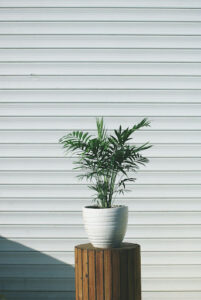
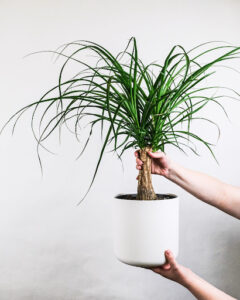
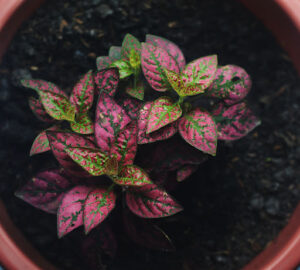




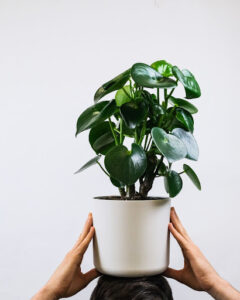
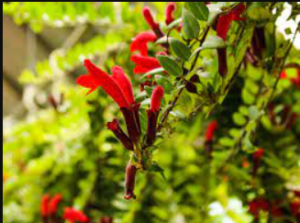
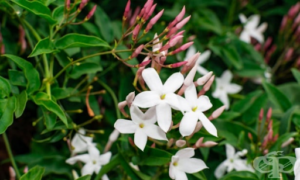
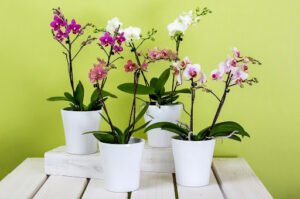

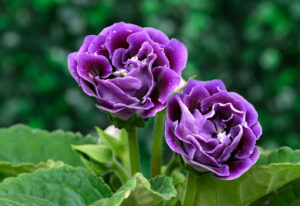
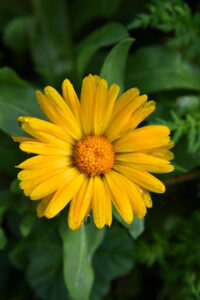
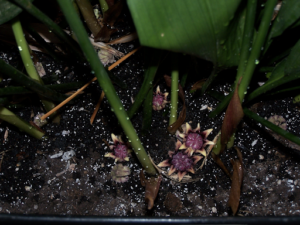
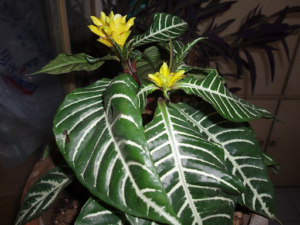
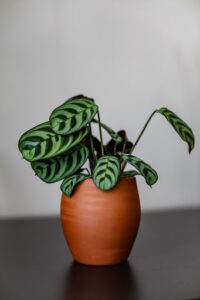
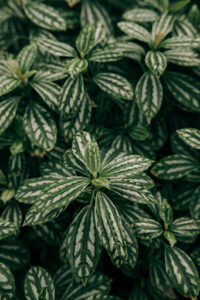

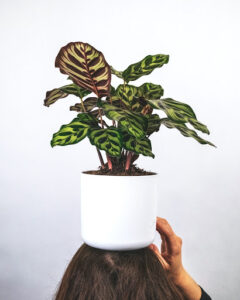






![How to Find Someone’s Tinder Profile? [2024 Expert Guide]](https://review42.com/wp-content/uploads/2023/06/Finding-Someone-on-Tinder.jpg)

